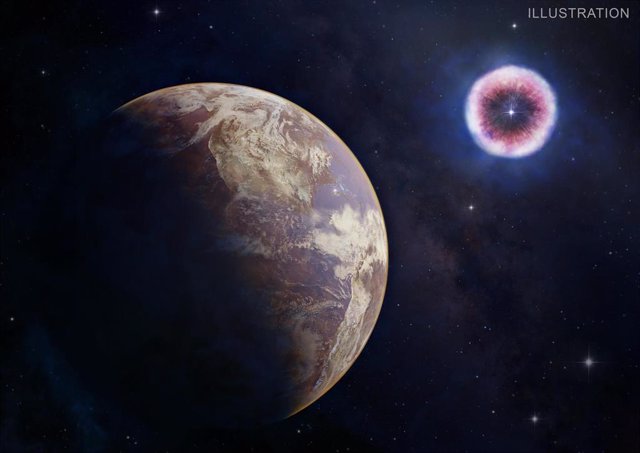20 Apr. (EUROPE PRESS) –
Astronomers using data from the NASA Chandra X-ray Observatory and other telescopes have identified a new threat to life on planets like Earth.
This is a phase during which the intense X-rays from exploding stars can affect planets more than 100 light-years away. This result has implications for the study of exoplanets and their habitability, NASA reports in a statement.
This newly discovered threat comes from the shock wave of a supernova hitting the dense gas surrounding the exploded star, as shown at the top right of our artist’s impression. When this impact occurs, it can produce a large dose of X-rays that reaches an Earth-like planet (shown at bottom left, illuminated by its out-of-sight host star at right) months to years after the explosion and can last for decades. Such intense exposure can trigger an extinction event on the planet.
A new study reporting on this threat is based on X-ray observations of 31 supernovae and their aftermath, primarily from NASA’s Chandra X-ray Observatory, ESA’s Swift and NuSTAR and XMM-Newton missions, showing that the planets they can be subjected to lethal doses of radiation located about 160 light-years away.
Prior to this, most research on the effects of supernova explosions had focused on the hazard of two periods: the intense radiation produced by a supernova in the days and months after the explosion, and the energetic particles that arrive hundreds or thousands of years later.
If a torrent of X-rays sweeps across a nearby planet, the radiation could seriously alter the planet’s atmospheric chemistry.. For an Earth-like planet, this process could remove a significant portion of the ozone, which ultimately protects life from dangerous ultraviolet radiation from its host star. It could also lead to the demise of a wide range of organisms, especially marine ones at the bottom of the food chain, leading to an extinction event.
After years of lethal X-ray exposure from the interaction of the supernova and the impact of ultraviolet radiation from the host star of an Earth-like planet, a large amount of nitrogen dioxide is likely to be produced, causes a brown haze in the atmosphere. “Greening” of land masses could also occur due to damage to plants.
There is strong evidence, including the detection in different parts of the world of a type of radioactive iron, that there were supernovae near Earth between 2 and 8 million years ago. The researchers estimate that these supernovae were between 65 and 500 light-years away from Earth.
Although Earth and the Solar System are currently in a safe space in terms of possible supernova explosions, many other planets in the Milky Way are not. These high-energy events would effectively shrink the areas within the Milky Way galaxy, known as the Galactic Habitable Zone, where conditions would be conducive to life as we know it.
Because X-ray observations of supernovae are rare, particularly of the strongly interacting variety with their surroundings, the authors urge follow-up observations of interacting supernovae for months and years after the explosion.










![[Img #74674]](https://thelatestnews.world/wp-content/uploads/2024/12/Santiago-Ramon-y-Cajal-The-promoter-of-modern-neuroscience-150x150.jpg)


![[Img #74674]](https://thelatestnews.world/wp-content/uploads/2024/12/Santiago-Ramon-y-Cajal-The-promoter-of-modern-neuroscience-300x200.jpg)
